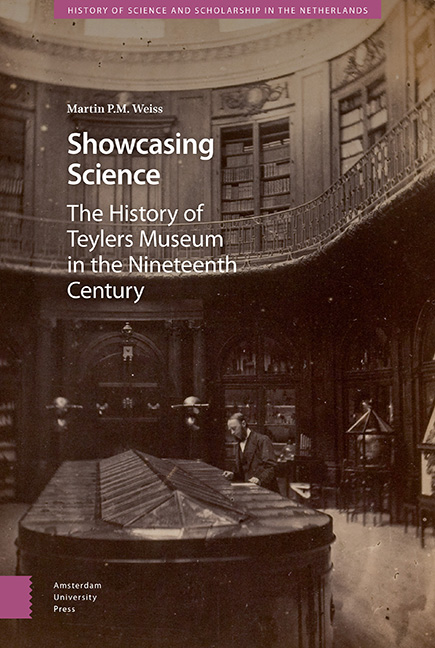Book contents
- Frontmatter
- Contents
- List of Illustrations
- 1 Introduction
- 2 The Birth of a Musaeum
- 3 Van Marum – Empiricism and Empire
- 4 Van der Willigen – Precision and the Discipline of Physics
- 5 Lorentz – Function Follows Form and Theory Leads to Experiment
- 6 Conclusion
- Appendix
- Acknowledgements
- Archives
- Bibliography
- Index
4 - Van der Willigen – Precision and the Discipline of Physics
Published online by Cambridge University Press: 21 November 2020
- Frontmatter
- Contents
- List of Illustrations
- 1 Introduction
- 2 The Birth of a Musaeum
- 3 Van Marum – Empiricism and Empire
- 4 Van der Willigen – Precision and the Discipline of Physics
- 5 Lorentz – Function Follows Form and Theory Leads to Experiment
- 6 Conclusion
- Appendix
- Acknowledgements
- Archives
- Bibliography
- Index
Summary
I An Unexpected Guessing Game (Intro)
One year after Elisa van der Ven had been appointed the new curator of Teylers Museum's scientific instrument collection, he sent his first detailed report on his activities and future plans for the collection to the trustees of the Teyler Foundation. It was April 1880, and Van der Ven reported that he had spent a great deal of time trying to gain an overview of what instruments he had inherited from his predecessors, and trying to figure out what exactly they had acquired them for. This, he stated, had been far more difficult than he had expected for a number of reasons: his predecessors appeared not to have been particularly eager to record their thoughts and plans in writing, for instance, and the instruments did not appear to have been stored in a particularly orderly fashion. As Van der Ven complained: “In the museum the strangest objects were then to be found together, so that often from a cupboard that seemingly served for the storage of similar instruments, different ones emerged, that had nothing to do with the others scientifically”.
While this delayed his compiling a catalogue of the collection, what completely stumped Van der Ven was a small building in the garden behind the Museum that had been constructed by his immediate predecessor, Volkert Simon Maarten van der Willigen, sometime between March 1866 and February 1867. The report to the trustees contains a remarkably frank admission that he didn't have a clue why this building – which was roughly the size of a large hut, was built in stone, had a large slit in its roof and was referred to as the “observatory” – had been erected. Van der Ven literally wrote about this building in the garden: “For what purpose it has been put there is difficult to guess”. The only thing that was clear was that the building had been used for measurements of some sort. One promising clue seemed to be that no iron had been used in the building, which suggested that any sort of electromagnetic induction was to be avoided. However, Van der Ven pointed out that this, too, failed to explain why he had found a Universal Instrument “with thick iron axles” in the building.
- Type
- Chapter
- Information
- Showcasing ScienceA History of Teylers Museum in the Nineteenth Century, pp. 197 - 272Publisher: Amsterdam University PressPrint publication year: 2019



